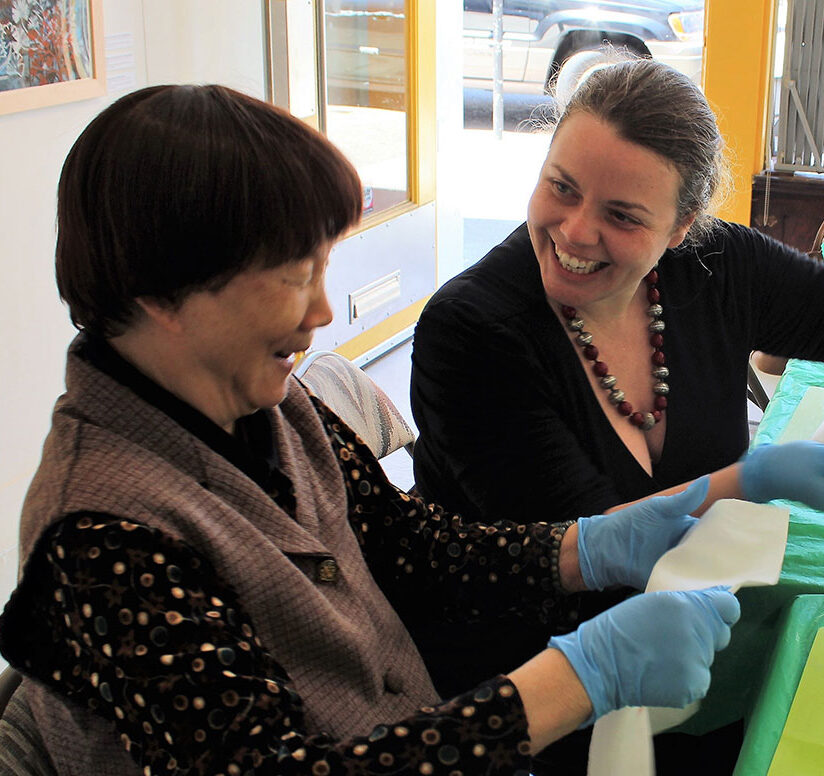Federal Funds Can Make a Difference in Building the Aging Services Workforce
Workforce shortages in aging services have become a priority in the past 24 months—for federal and state policymakers and advocacy organizations, including LeadingAge. While the pandemic has shone a bright light on these needs, the reality is that challenges are a long-standing issue in our sector—not only among direct care workers, but at all levels of organizations.
Critical workforce-related provisions in the Build Back Better legislation now in the Senate address this issue by allocating funds to either expand existing training and education initiatives or create new ones.
One example of the former is the Health Profession Opportunity Grants (HPOG) program, which would receive $425 million. HPOG, a program under the Administration for Children and Families (ACF), U.S. Department of Health and Human Services, began in 2010 with the awarding of 27 five-year grants. A second series of five-year grants was launched in 2015 and was then given a one-year extension that ended on Sept. 29, 2021. In the latter round of grants, there were 32 recipients located in 21 states.
Grantees included two state affiliates of Volunteers of America (VOA), a LeadingAge member.
LaSonya Bishop, director of workforce programs for VOA Texas, describes the grant’s beneficiaries and its importance: “We had single moms and folks in very precarious situations [and in] entry-level jobs, making 7-8-9 dollars an hour sometimes, being on public benefits, and facing a lot of struggle and hardship. We’ve seen participants in these situations go into $60-$70,000 jobs with nice signing bonuses. So [this program] truly is life-transforming. We’ve seen directly how this grant impacts lives, and we hope to be able to continue this work.”
“The HPOG grant really made [it] possible for individuals to get into long-lasting sustainable career pathways,” says Diandra Gourlay, strategic growth manager, social services for VOA Michigan.
VOA Michigan’s HPOG grant, just above $2 million per year, served all of Wayne County, MI, which includes Detroit. Eligibility requirements for participants were initially set to be at or below 130% of the federal poverty level. That led to more applicants than the program could accommodate, so eligibility was limited to those receiving either cash assistance or food assistance.
VOA Michigan worked with one community college, but the rest of the training providers were privately owned, entrepreneurial companies that train people for health careers. According to Gourlay, many were “mom-and-pop shops,” 80% of them owned by women of color. Due to transportation challenges, VOA Michigan needed training providers that were close to the participants. Providers were identified through networking and with referrals from Michigan Works!, a statewide workforce development system.
The training providers also proved invaluable by helping to identify candidates for the program, and to connect graduates with employers.
Through six years, 1,413 individuals went through the VOA Michigan program. Of those who reported employment—just under 500 graduates—more than half reported working in long-term care.
VOA Texas operates more than 40 affordable housing communities in the state, but offers many other services, including treatment for addiction, intellectual and developmental disabilities services, community re-entry programs, and a continuum of support services that address the needs of the whole person.
VOA Texas received its HPOG grant under the umbrella of its Financial Opportunity Centers—in Houston and Conroe, TX—which are focused on helping people achieve financial stability via employment services, financial coaching, and income support services. Its grant provided slightly more than $1 million per year.
“This program truly is life-transforming. We’ve seen directly how this grant impacts lives, and we hope to be able to continue this work.”
Over the course of six years, more than 1,200 individuals were served by the VOA Texas HPOG program. Over 96% gained employment with industry-recognized credentials.
Bishop describes eligibility for its program as “a primary focus on low-income individuals or recipients of benefits such as TANF, SNAP, WIC, and any other determinants that will put an individual at a disadvantage to access training and other employability skills.”
Courses were taught by community colleges or by private training companies. The length of programs ranged from six weeks to two years, depending on job type.
The VOA Texas HPOG menu of options for participants included training for CNAs, patient care technicians, phlebotomists, licensed vocational nurses [a.k.a., LPNs in other states], registered nurses, surgical technicians, and radiology technicians.
Popular courses in the VOA Michigan program were for CNAs, phlebotomy technicians, PCTs (patient care technicians, a job that combines certification as CNAs, phlebotomists, and EKG technicians), and LPNs.
Gourlay notes that practical nurses (a.k.a., LPNs) work in long-term care, typically not in hospitals. She says the Detroit-area cost for a practical nursing program is $30-33,000. VOA Michigan helped with these expenses to some degree; some students drove to Ohio for these courses, where the cost is about $18,000.
VOA Texas partnered with Workforce Solutions-Gulf Coast Workforce Board, the public workforce system in the 13-county Houston-Galveston region. Workforce Solutions matches job-seekers and employers and helped create a pipeline of candidates to VOA Texas for its HPOG. VOA Texas was even able to co-locate staff in the Workforce Solutions offices.
Bishop cites one example of how LTSS providers can participate in and benefit from such programs. Ashford Gardens, a Houston nursing home, worked with VOA Texas on a strategic plan to integrate case management, coaching, clinical instruction, and employment preparation for CNA candidates, with training done on-site at the home. Twenty candidates were recruited by VOA Texas and received eight weeks of training—60 hours of classroom and 40 hours of clinical training. The training included weekly career coaching from VOA Texas on communication, patient compassion, working under stressful conditions, and balance/boundaries. Financial literacy workshops on money management, budgeting, credit building, and financial planning were included. Students also shadowed experienced staff. All 20 candidates completed the course and obtained certification; 18 of them were hired by the provider.
Wraparound Services
Wrap-around services are an important element of these programs, designed to keep participants from having their progress derailed by life barriers that could interfere with their education.
VOA Texas, through its Financial Opportunity Centers, offers financial education: coaching, financial literacy workshops, tax season assistance, and access to financial products and services through partnerships with banks and credit unions. In addition, supports for individuals include help obtaining food stamps, health insurance, and federal student aid.
VOA Michigan’s wrap-around benefits included transportation assistance in the form of gas cards or bus passes, provision of books and scrubs for training and employment, childcare assistance, re-housing services (e.g., first month’s rent or security deposits), and emergency assistance for things like car repairs or coverage of utility bills. VOA Michigan also covered the cost of final tests or licensure exams for participants.
Gourlay, like Bishop, says that VOA Michigan would also apply again for an HPOG grant if new federal funding is achieved: “It has a two-generation impact on poverty. And that’s really what we want to see. Typically, we serve single mothers; this can get them out of poverty and give their children options and better choices. It’s a better head start on their lives.”
How is your organization increasing wages and benefits to attract and retain direct-care workers? The LeadingAge Story Collector, powered by Greystone, makes it easy to submit your story. Try it now.

Most Recommended
November 08, 2024
 HOTMA: New Rules for Housing
HOTMA: New Rules for Housing
November 06, 2024
 Colleagues on the Move, November 6, 2024
Colleagues on the Move, November 6, 2024
November 06, 2024
 Analysis: What Does the Final CY2025 Home Health Rule Include?
Analysis: What Does the Final CY2025 Home Health Rule Include?
October 29, 2024
Katie Smith Sloan Urges Members to Build a Movement, Take Action
Recently Added
December 13, 2024
CAST Members in the News
December 13, 2024
a2 Pilot Awards Open for AI-based Healthy Aging Projects
December 13, 2024
HUD Finalizes 30-Day Eviction Notification Rule
December 12, 2024



